Welcome to a new issue of the Journal of Runic Studies, the premier Malkioni publication for studies into the nature of Glorantha. If you haven’t subscribed yet, please consult with the spirit bound to the appropriate electronic page.
This week I was fighting the spirits of Mallia so this issue of the Journal might not be as complete or insightful as usual. It’s usually insightful, right? I hope it is… you wouldn’t believe the sort of review processes we have here. Malkioni castes like their 360 Feedback, you know.
God Learner Sorcery
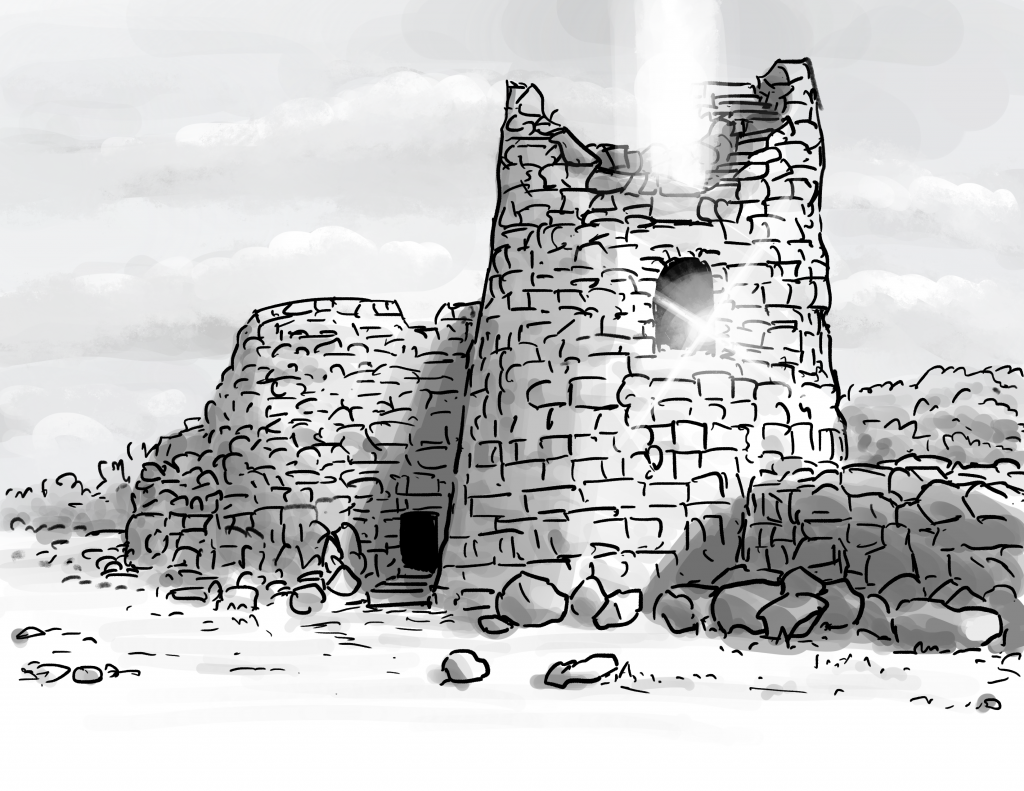
A Short Detour Teaser

I’m getting close to releasing my first Jonstown Compendium book, a simple adventure called “A Short Detour” which also contains a not-so-simple deep dive into the nature of Chaos. I hope you will all like it!
And yes, it’s here at the top, instead of in the Jonstown Compendium section, because it’s my book and my newsletter and I should be allowed some selfish promotion once in a while!
Chaosium News

Here are this week’s Chaosium news!
ImpCon 4
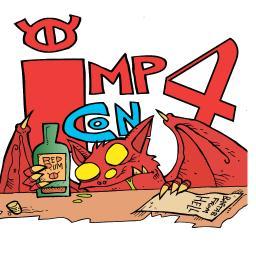
Chaosium’s Impromptu Convention 4 happened this week-end, and was a pretty nice way to connect with the rest of the tribe as usual. There’s not much to say since Chaosium is politely asking everybody to just keep the magic to themselves — ImpCons are just coming and going, like a Dimensional Shambler at the scene of a crime, or like Jar-eel in a Sartarite heroquest.
The next convention should be Chaosium Con, and I hope the pandemic situation won’t prevent me from attending… it’s not looking great in the US right now though.
ChaosiumCon VIP Sessions

Speaking of ChaosiumCon, Chaosium has posted a list of the “VIP Sessions” for it. It shouldn’t be a surprise that the list includes RuneQuest sessions by Jason Durall and Jeff Richard.
As a reminder, Gamemasters can sign-up for running games here.
QuestWorld Rulebook Update
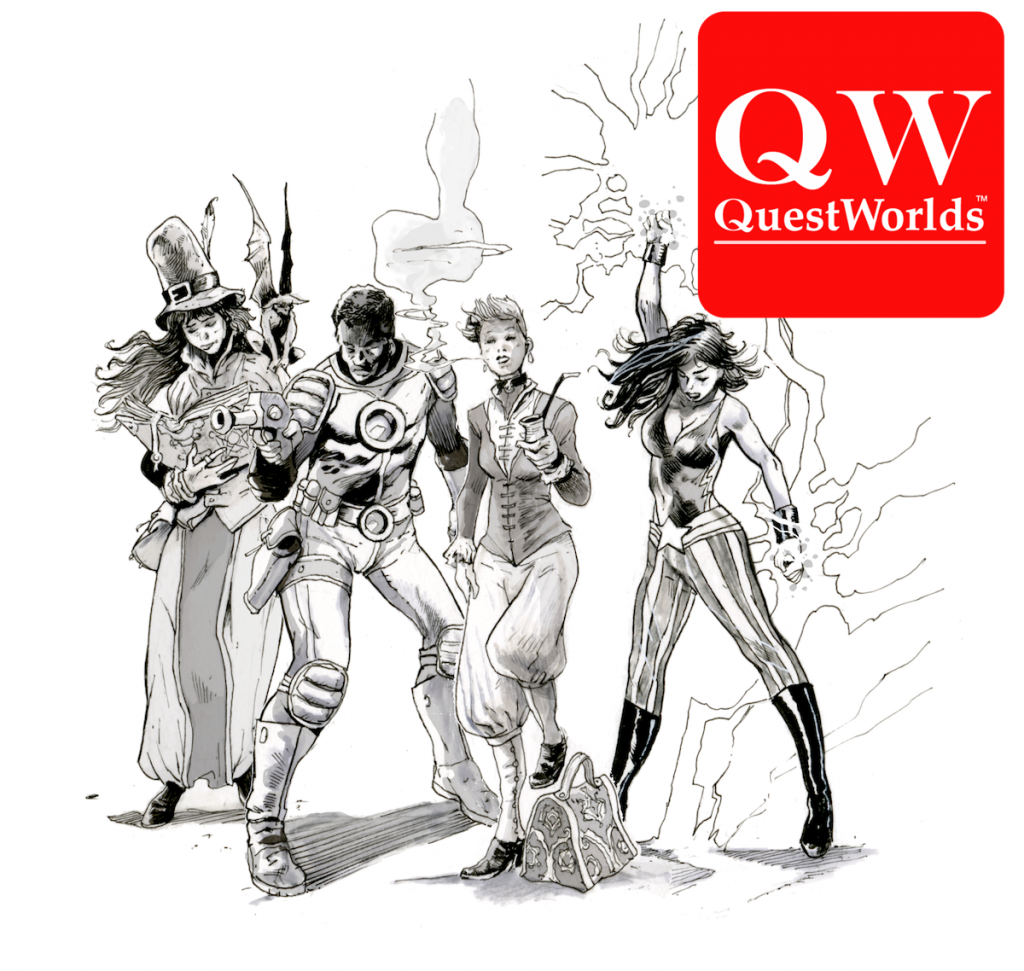
The QuestWorld rulebook is off to copy editing, and with a slogan like “2022 is going to be the year of Questworlds!“, we can potentially expect to see the new game this year.
The new ruleset is best described as HeroQuest 2.3 (check out the SRD here), but the rulebook will be a generic system, with only a few “example” settings. No Glorantha in there, sorry, but I’m sure it will be easy to do some light tweaks on the existing HeroQuest Glorantha to play with the updated rules… that is, if that currently out-of-print book is rebranded and re-released.
Jonstown Compendium

The Jonstown Compendium is Chaosium’s community content program for all Gloranthan games, hosted on DriveThruRPG. Disclaimer: all the relevant links are affiliate links that hopefully will let us cover some of the hosting and maintenance costs for the website and podcast! Thanks for using them!
Friends and Foes: Chaos Set 2022
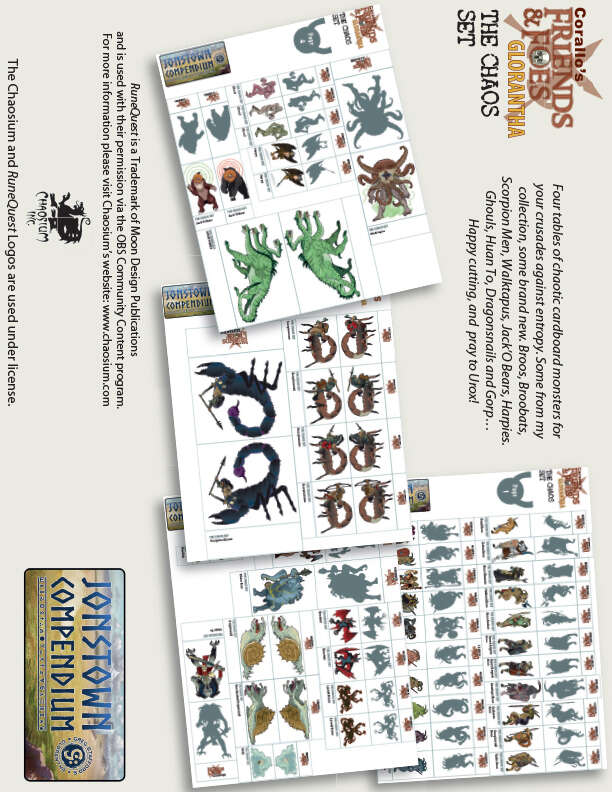
Dario Corallo has more cardboard monsters for the new year! I believe that some are using illustrations you’ve already seen in his art packs, while others are new drawings. Eitherway, they are meant for table play, but can easily be converted into VTT tokens, even though they are drawn from the side and not the top.
Griffin Mountain Map Close-Up, and More Maps
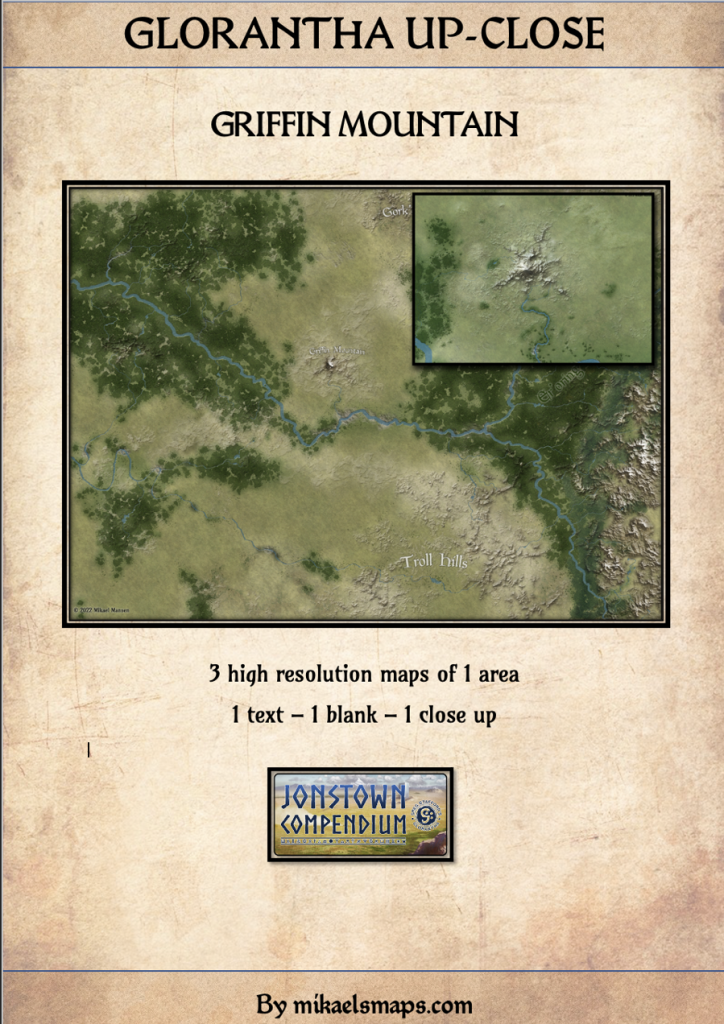
Mikael Mansen continues to churn out the maps. There are multiple new generic settlement maps, and a close-up of Griffin Mountain (pictured above).
Jeff’s Notes

Jeff Richard, the current mastermind on everything Gloranthan at Chaosium, is often posting notes and thoughts on the RuneQuest Facebook group. Here’s our curated list from the past week. A partial archive of these sources is compiled on the Well of Daliath.
Tarsh, Saird, and Lowland Peloria
Jeff looks at villages in the Lunar Provinces:
Tarsh was settled by two very different waves of colonists. The first was the largest. These were settlers from the area traditionally called Saird (modern Holay, Aggar, Imther, and Vanch) that came to Dragon Pass in the aftermath of the Conquering Daughter.
It’s easy to get lost with all the history and all the names so let’s bring out the AAA maps:
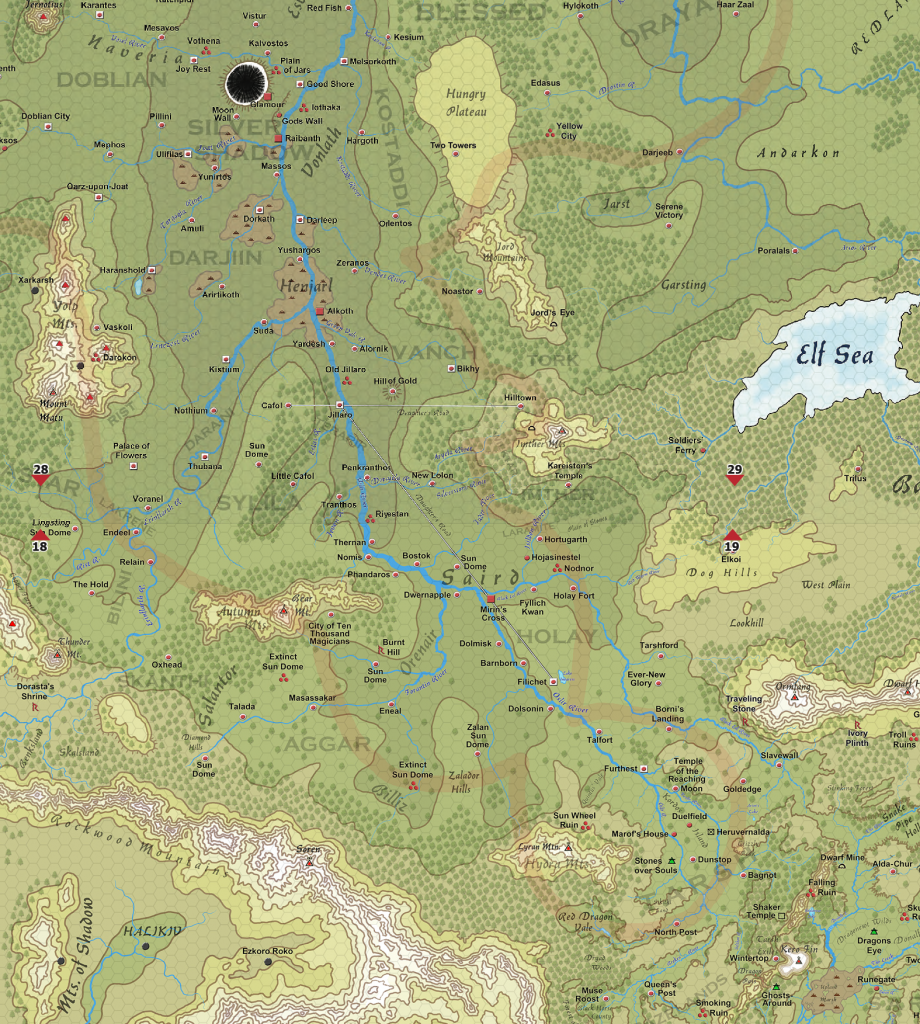
Sartar is in the bottom right corner (you can see Runegate there). You can see the faint Glowline extend up to around Furthest, and covering some of Tarsh (dividing it between the colonized “Lunar Tarsh”, and the “Old Tarsh” of the rebels who stay close to the Shaker Temple and Wintertop. In the north is Glamour and the heart of the Lunar Empire.
You can also now spot the places Jeff mentioned, from where the original Tarsh settlers came before they moved close to Kero Fin. This happened around 1330, when the aforementioned Conquering Daughter did the aforementioned conquering of Holay. Her real name was Hwarin Dalthippa, and she was a daughter of the first Red Emperor (it seems a bit more complicated than that but I don’t understand all the nuances yet… bear with me). If you’ve see the “Daughter’s Road” on the map, she’s the one who got that built.
Now the distances involved are not very great – it is only about 150 km from Filichet to Bagnot – which meant it was easy for waves of settlers to travel with their herds and families into what became Tarsh.
Saird in the First Wane would have been a collection of chieftains and petty cities at the frontier of Dragon-haunted Dragon Pass, loosely united into the Kynnelfing Alliance. Generations before many had fought for Jannisor. The people were farmers with herds of sheep and cattle. The people were mostly Orlanth Thunderous or Adventurous types, with a large minority of Yelmalio cultists and other Lightbringers. However, they had centuries of sustained cultural interchange and trade with Dara Happa – Yelm was viewed as a more or less equal contender with Orlanth for rulership of the world and for the love of Ernalda.
The “Dragon-haunted Dragon Pass” is because at this time, Dragon Pass would have still been in the Inhuman Occupation. That’s the period of time when no humans lived there, after the Dragonkill War of 1120 had the dragons kill most of them, and got the rest to flee. The area was resettled more or less simultaneously by the Grazelanders (from Prax in the east), the Tarshites (from Saird in the north), and the Orlanthi (from Heortland in the south).
The Kynnelfing Alliance was the Holay Orlanthi kings’ alliance that tried to resist the Conquering Daughter… and failed. Jannisor, one of the rebel heroes, even came pretty close to invading the city of Glamour itself in 1275. Interestingly enough, he was allied with the Sable Riders of Prax at the time, because they had some kind of immunity to the Lunars’ powers… but the Lunars knew of the deeper connection between the “Lunar Deer” and the Red Goddess, and turned the Sable Riders against Jannisor. That’s when the Sable Tribe started their long tradition of working with the Lunar Empire!
By 1450, these Orlanth Thunderous types had settled a broad belt alongside the Oslira and Black Eel rivers, up to Shakeland and Wintertop and then hopping over the River to the Far Point and the Donalf Flats. A powerful Orlanth Rex dynasty based at Bagnot had ruled over them for over a hundred years, but the dynasty was killed without heir in 1448. After a civil war, a new dynasty from Wintertop was crowned in Bagnot.
The “powerful Orlanth Rex dynasty” is the legacy of Arim the Pauper (who led the Holay exiles south and founded Tarsh in the first place) and Sorana Tor (some sort of Earth Goddess found at the foot of Kero Fin). Their kids started the “Twin Dynasty”, which is what ended in 1448. The civil war lasted until 1538 when Palashee Long Axe took power and allied Tarsh with Sartar, but he was killed in 1555 and Tarsh has been a Lunar Provincial Kingdom ever since.
These settlements would have been indistinguishable from those in Holay, Aggar, or Imther. Wheat and barley would be the main crops, pigs, sheep, and cattle the main livestock. Villages were initially unwalled, but the dynasts built many fortresses and walls after 1375 and unwalled villages were rare by the time of the civil war.
Saird itself is mostly riverine plains surrounded by a bowl of hills maybe 75 km by 140 km in dimension. Think something like the Pannonian Basin around Budapest. Building techniques would be heavily influenced by Dara Happa (just as in Sartar they are heavily influenced by Esrolia).
I’m not going to start looking up architecture differences between Dara Happa and Esrolia, but I’m going to hazard a guess that the former has more golden tall phallic structures, while the latter has more colourful square buildings.
Beneath the dynasts and priestly lineages at Shaker Temple or Haruvernalda, most folk would belong to free settler families or their unfree slaves (taken in war with the Lunar Provinces or the nomads). However, between these groups were an influential class of mounted warriors (“thanes”) who gained power, wealth, and status in the wars against the nomads of Peloria. Cavalry mainly took the form of heavy, close combat cavalry backed up by light scouts and horse archers.
I’ve got no idea what Haruvernalda is, but I had heard about the “rise of the thane” in Orlanthi society. After almost a century of fighting Sheng Seleris’ Pentian nomads, it was pretty well known around the Lunar Empire that people on horseback can kick some severe ass. So surely a few people started getting the idea of doing the same… possibly just to look cool at first, but quickly because they realized horses are damn useful. And that’s why your thane of Apple Lane now has a fancy title and a fancy mount!
The Most Popular Cults in the Lunar Heartlands
Jeff says:
The answer is the Seven Mothers, either collectively or individually. About 24% of the population in the Heartlands belong to the cult. All of the other Lunar cults total about 10% of the population. So a little more than a third of the population in the Heartlands belong to Lunar cults (we are talking more than the minimal lay member rites).
I assume that another third of the population would be lay members, if not more.
The next biggest cult in the Heartlands is Lodril at about 14%. In third is the Grain Goddess Oria at about 10%.
So where is Yelm, you might ask? The Yelm cult is very magically, socially, and politically important, but it is comparatively small numbering about 4% of the population.
As far as I know, only the powerful noble families with lineages dating back a few centuries have true Yelm initiates and priests… most other people are lay members.
Dendara is at about 5% overall. And Shargash and Polaris are each no more than about 2%.
Dendara is Yelm’s wife apparently, but I have no idea what she actually does. The other two are war gods of the sky pantheon.
And again, Tarsh resembles the Lunar Heartlands in that about 25% of the population follow the Seven Mothers and 10% follow Hon-eel. Where it gets VERY different is the rest of the population largely follow Lightbringer gods and their associates.
Initiates and Lay Members
Possibly as a result of the previous note on Yelm initiates vs lay-members, Jeff reminds us that there’s a difference between the two:
Initiates are those who have experienced the cult’s magical secrets. They are able to act as conduits for the deity and wield its Rune magic. That is a deep connection, like being married or the member of a family – it is not something that is done casually.
Casual members are lay members – those are the folk that show up to the worship ceremonies and feasts, learn some spirit magic and skills from the cult, but might have a deeper tie with another cult.
Lay members are here for the free t-shirts and the cheap hot-dogs. Initiates have to hand out the t-shirts and cook the hot-dogs.
Associate members are initiates of one cult who can participate in the magical secrets of another, closely connected cult. They might even have special roles in that closely connected cult. As a result they have a deeper magical connection with the other cult than mere lay members, even though technically they are not actually members of that cult. A good example would be the tie between Issaries, Chalana Arroy, Lhankor Mhy and Orlanth, or between Orlanth and Ernalda.
Another example might be Babeester Gor initiates taking part in Ernalda’s ceremonies as guardians.
In some communities most members of a cult are initiates or associate members – think like the members of the Orlanth cult in an Orlanthi clan or the Pavis cult in the Real City. In other communities, most members of a cult are lay members – think the Pavis cult in New Pavis or Pavis County.
Cult Demographics in Civilized Prax
Jeff has been “fine-tuning” demographics of Pavis County and Sun County:
As of 1626, there are about 25,650 humans residing in Pavis County – this includes Argrath’s companions but does not include those nomadic bands that might winter in Pavis County. There are about 19,000 humans residing in Sun County.
The biggest cults are:
– Ernalda 5325 (with another 4375 who are mere initiates of the Grain Goddess for a total of 9700)
– Yelmalio 4900 (575 in Pavis County and 4375 in Sun County)
– Orlanth 4700 (all in Pavis County)
– Zola Fel 3500 (1500 in Pavis County and 2000 in Sun County)
– Pavis himself has about 1000 initiates.Now Orlanth punches higher than that, if you add the 650 Humakti and 550 Storm Bull cultists in Pavis County (many of whom are sworn to Argrath), and the other Lightbringer cults. But it does give you an idea of the relative numbers of the various cults. Post the Liberation of Pavis, the Seven Mothers cult is very small, only about 500 members, and all in Pavis County).
I don’t have much to say about this whole thing, so here’s a wall of Jeff quotes… sorry!
For a point of comparison, in all all of Sartar (including Far Point and Sun County County) there are 6525 Yelmalio cultists. Of that, 2700 are in Sun Dome County and 1725 in the Far Point. There are more Yelmalio cultists in New Pavis than in Alda-Chur, but the Alda-Churi can also call on the 1000 Yelmalio cultists in the Vantaros tribe.
So let’s just ignore the Yelmalio cult in Tarsh, and focus on the cult in Sartar and Civilised Prax.
The cult in Sartar is about a quarter bigger and is definitely richer. The Sun Dome Templars in Sartar are definitely more militarily skilled and disciplined. But they also must deal with a far more powerful and established Orlanth cult. It may be autonomous, but generally the Sun Dome is an ally of the Prince of Sartar. In Sartar, the Sun Dome and Varntaros are effectively just two more tribes among many.
The cult in Civilised Prax is smaller, but can approach the Orlanth cult as a peer. They are objectively weaker than the Sun Dome templars in Sartar but compared to their neighbours they are much stronger. They can be far more independent and autonomous than their kin in Sartar. And within Sun County, the cult is far more dominant than in Sartar. In Sun County, the traditional “Ernalda cult” is effectively a Grain Goddess cult and is long-tied to Yelmalio – but in Sartar, the Ernalda cult can always call upon the Orlanth cult for protection and support, and has ties to Esrolia.
So even though they are the same cult, worshiping the same god with the same myths and rules, the cults behave differently.
That being said, Sun Dome County in Sartar maintains close religious and cultural ties to Sun County in civilised Prax. Two of the last three counts of Sun County have been Sartarite, and Yelmalio cult in Sun County was among the first to follow Monrogh’s vision (after the Sun Dome itself).
A final thought, that island of just under 5000 Yelmalio cultists exists in a sea of Praxian nomads. Many of them also worship Yelmalio, although no doubt the cult is adapted for nomadic life (the came into Prax in the Second Age). There are some 15,000 nomads in Prax and the Wastes that follow Yelmalio, two thirds of them from the Impala Tribe.
Now that doesn’t mean that the Impala Riders don’t raid or threaten Sun County – tribal identity often overrides cult identity. But it does mean that like among the Orlanthi, they follow rules of honor.
And although that sounds like a big number, remember the nomads are spread throughout Prax and the Wastes, at a very low general density. And those Yelmalions belong to tribes dominated by over 60,000 Waha cultists (there are also another 19,000 Orlanth cultists among the tribes).
As an aside, here’s the Big Rubble’s population:
The Big Rubble has several other cults of importance:
– Pavis 500
– Black Fang 250+
– Kyger Litor 500 (plus numerous lay members)
– Zorak Zoran 150
– Argan Argar 50
– Aldrya 1000
– Thed 200
– Mallia 175
There are about 250 “others”, from baboons to dragonewts to ogres and whatever.
If you’re wondering why there are so few Troll gods initiates given the big Troll population of the Big Rubble, don’t forget that two-thirds of that population are lowly trollkins. Jeff has a rule of thumb for that, actually:
As a general rule, for any group of 100 “trolls”, the assumption is that there are roughly:
– 20 adult dark trolls
– 8 immature dark trolls
– 4 Great Trolls
– 3 Cave Trolls
– 65 TrollkinSome communities have few great trolls or cave trolls, some more. But this is the benchmark.
Notes on Dwarves
Jeff talks about dwarves:
The dwarfs are an often underestimated and underrepresented Elder Race. In Sartar, they arguably played a bigger role than any other major Elder Race. They built the walls of Sartar’s cities, the Pockets of Boldhome, and built the initial King’s Road between Boldhome and Jonstown (in particular the incredible path through the Quivin Mountains).
And yes, Chaosium writes “dwarfs” sometimes and “dwarves” other times. It looks like they settled on the former for the new RuneQuest line, though.
Dwarfs might look more like humans than aldryami or trolls do, but they are more distinctly alien. Only the dragonewts are considered more mysterious and enigmatic.
Unaging, secretive, and possessing incredible skills and lore unknown to the rest of Glorantha, the dwarves view trolls and aldryami as implacable enemies and humans as fast-breeding pests.
Lovely. Thankfully, the dwarfs who live near Dragon Pass often adhere to Openhandism, which means they openly trade and interact with non-dwarf races (mostly humans). This is because they believe they can get us to help them repair the cosmos that was broken during the Gods War… so your dwarf NPCs will be mean and grumpy and weird and alien, but they’ll be there talking to your players!
Jeff then adds this on dwarf history in the Third Age, starting from the Dragonkill War which we already mentioned previously:
The danger from the human empires was largely broken in 1120, but the dwarfs were incredibly weak. Greatway was the most important stronghold in central Genertela, and the dwarfs were extremely risk adverse, needing to rebuild. So things start off with the elves trying to reclaim the Pass from 1120 to 1150. Reinforced by Brown Elves from the Old Woods, the Stinking Forest expands to the Indigo Mountains (as well as down the Dragonspine).
Around 1150 the trolls, aided by the half-trolls, defeat the Marching Forest with beetles, poison gas, and spirits. The angry ghosts of the elves still haunt the Deadwoods. And around 1180 the trolls and half-trolls fought.
Of note, the players in one of my campaigns have freed up the Deadwoods from their curse! So it should start growing back now. You can bet the trolls are going to be pissed.
After that came the dark troll period of supremacy, which was broken in 1222 by the dragonewts. Also around 1240 the trolls distract themselves by defeating the Praxians and conquering Pavis. After that the Grazers and Beast People have their period of importance. Which lasts until about 1320 when the Orlanthi return to reclaim Dragon Pass.
The dwarfs did not stir until after 1240 or so, until the trolls sacked Pavis, with its dwarf secrets. Sometime before 1490, the trolls made an assault on the Door That Goes Nowhere in the Three Little Giant Mountains. The Dwarfs were forced to temporarily withdraw from Door Mountain, sealing it off from the rest of the Greatway.
Jeff shared this map to illustrate what the Door That Goes Nowhere might be:

The origin point of the Giant’s Walk being the Giant Stairs at Door Mountain has been on maps even since Trollpak at least, but this Door to Nowhere seems new. I guess it makes sense that there’s a door on Door Mountain, but it’s interesting that it might be where giants come from.
Meanwhile The Dwarf decides to ally with the Orlanthi and lends his aid to Sartar. Dwarfs build Sartar’s cities and roads. This is the typical dwarf response – use the humans as a counterweight to the trolls.
The capitalized Dwarf mentioned here is probably Isidilian The Wise, a.k.a. The Dwarf of Dwarf Mine, one of the friendliest dwarfs in the world. He’s very very old, having been “forged” before the Dawn, and has been a supporter of the House of Sartar for most of the kingdom’s history… until:
But to the dwarfs’ surprise, Saronil stole dwarf secrets and used them to build the Orlanth Temple. The dwarfs withdraw from direct aid of Sartar, but the damage has already been done. The Sartarites took the secrets of stonemasonry and other crafts. And although they certainly fought with the trolls, they tended to fight the wrong ones.
You’d think the dwarfs would give up on humans and turn back to their underground works, but hey, don’t underestimate how much they hate the trolls:
And so the dwarfs make contact with other humans as well. Other humans who will fight trolls and keep the Sartarites from exploiting the dwarf secrets they stole. But it is important to remember that the dwarfs really don’t give a damn about human theologies and politics, and probably have great difficulty telling them apart.
The Elder Race can’t help but fight each other and waste their resources. The humans are viewed by all the Elder Races as untrustworthy bit players. The other Elder Races are the real foes. Thousands of years of hatred and conflict, between species with some very long lived rulers.
A few more notes:
In Boldhome, the dwarfs have a sealed-up complex, called the Inviolate Dwarf Palace. Dwarf constructs are sometimes seen deep in the Pockets.
And:
The most commonly encountered dwarfs are rock and copper dwarfs, especially in Boldhome and New Pavis (dwarfs are not an uncommon sight in either city). Most humans think of dwarfs as small miners, bronze workers, and stoneworkers, capable of amazing craftsmanship.
But the dwarfs nearest the Lunar Empire are not Openhandist and far less friendly than The Dwarf. So Sartar has likely gotten far more dwarf gifts than the Lunar Empire has in its entire history.
Remember, Dwarf Mine and Greatway are the center of Openhandism in Glorantha.
Community Roundup
The community roundup is our highlight of interesting things being mentioned in the Glorantha-related Facebook groups, sub-Reddits, and other similar online places.
Arkat The Destroyer
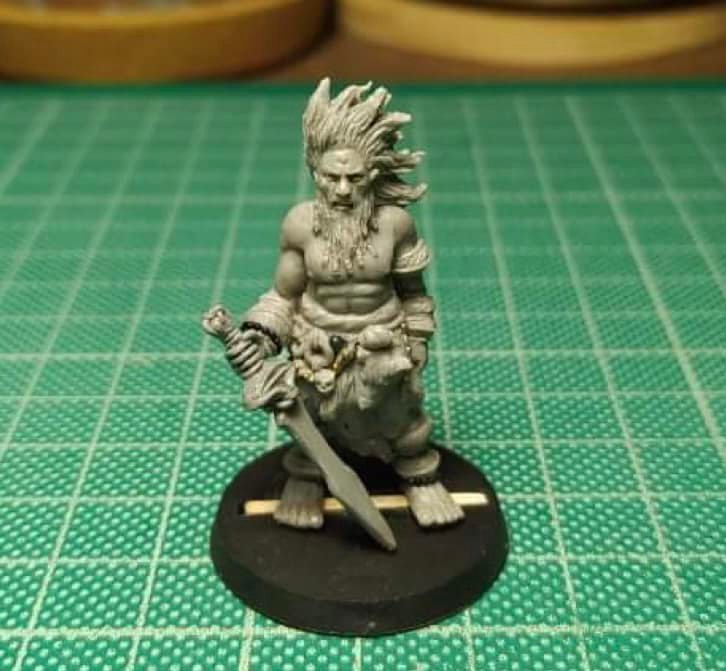
Richard Helliwell of Infinity Engine has posted some sneak peek at an upcoming Arkat miniature, which I’m sure will delight Arkat fanboys like Bud from Bud’s RPG Reviews. The sculpt looks absolutely fantastic, and seems directly inspired by this amazing illustration from the Glorantha Sourcebook:

Thank you for reading
That’s it for this week! Please contact us with any feedback, question, or news item we’ve missed!



One comment on “Journal of Runic Studies #32”